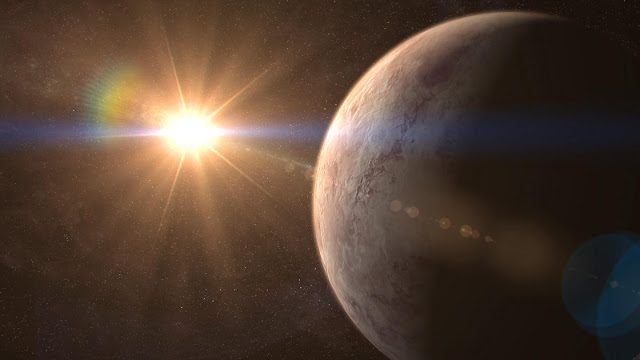

| Online: | |
| Visits: | |
| Stories: |

| Story Views | |
| Now: | |
| Last Hour: | |
| Last 24 Hours: | |
| Total: | |
Nearby ‘Superearth’ Discovered Orbiting Red Dwarf Star

Credit: Gabriel Pérez, SMM (IAC).
“So far the only planet we have found is GJ 536 b but we are continuing to monitor the star to see if we can find other companions”, says Alejandro Suárez Mascareño, who is the first author on the article. “Rocky planets are usually found in groups”, he explains, “especially round stars of this type, and we are pretty sure that we can find other low mass planets (other “superearths”) on orbits further from the star, with periods from 100 days up to a few years. We are preparing as programme of monitoring for transits of this new exoplanet to determine its radius and mean density”.
“This rocky exoplanet is orbiting a star much smaller and cooler than the Sun” comments Jonay Isaí González, “but, sufficiently nearby and bright. It is also observable from both the northern and southern hemispheres, so that it is a very interesting for future high stability spectrographs and in particular for the possible detection of another rocky planet in the habitability zone of the star”.
“To detect the planet”, states Rafael Rebolo “we had to measure the velocity of the star with an accuracy of the order of a metre per second. With the construction of the new instrument ESPRESSO, co-directed by the IAC, we will improve this accuracy by a factor of ten, and will be able to extend our search to planets with conditions very similar to Earth, around this and many other nearby stars”.
The planet has been detected in a joint effort between the IAC and the Geneva Observatory, using the HARPS (High Accuracy Radial velocity Planet Seeker) spectrograph on the 3.6M ESO Telescope at La Silla (Chile) and HARPS North, on the Telescopio Nacional Galileo (TNG) at the Roque de los Muchachos Observatory, Garafia (La Palma).
This planet was discovered during the preparation of the doctoral thesis of Alejandro Suárez Mascareño, within the programme of Training of Research Personnel of the Ministry of Economy, Industry, and Competitivity (MINECO).
Contacts and sources:
Elena Mora
Instituto de Astrofísica de Canarias (IAC)
Source:


